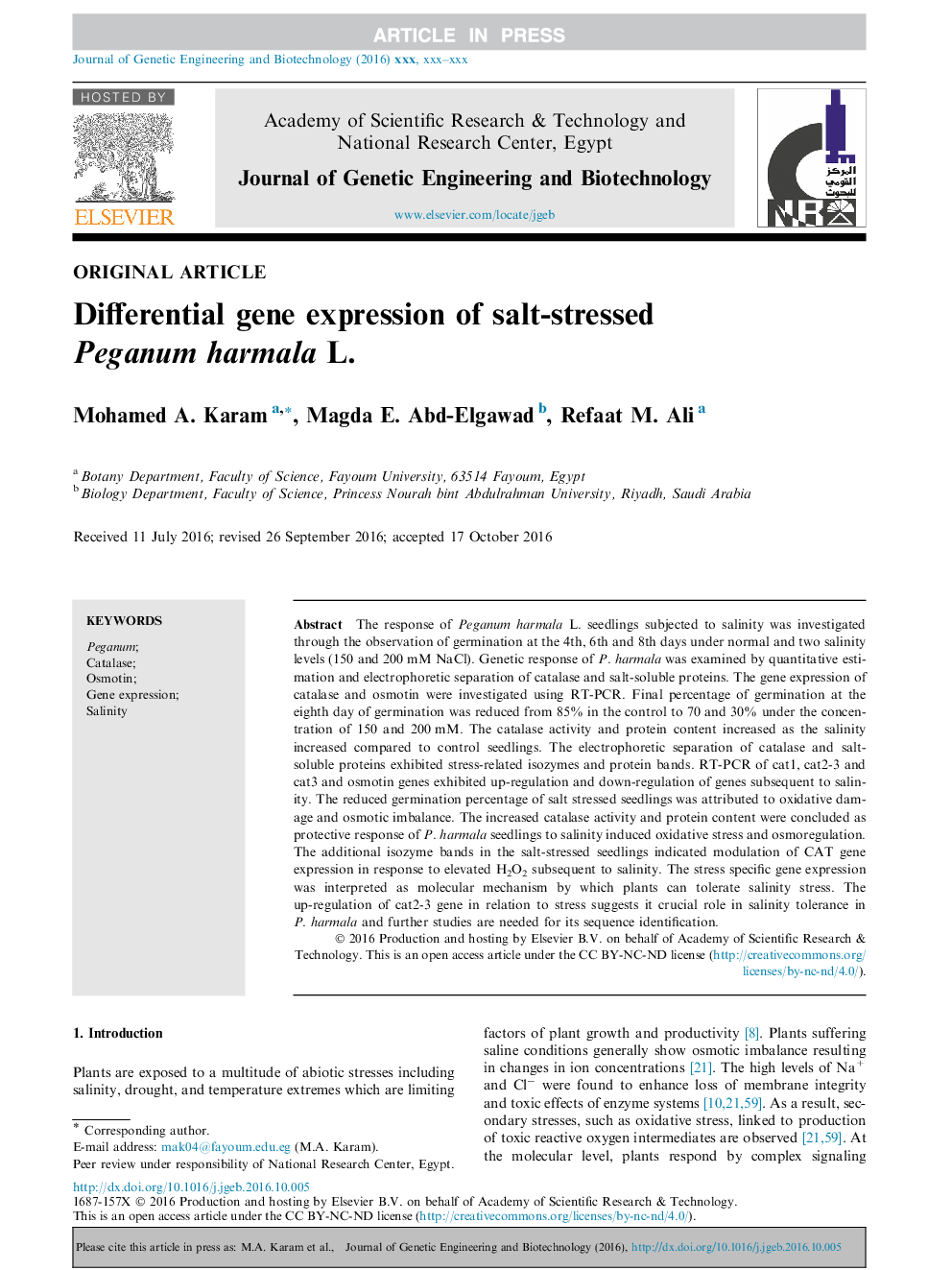| Article ID | Journal | Published Year | Pages | File Type |
|---|---|---|---|---|
| 8416548 | Journal of Genetic Engineering and Biotechnology | 2016 | 8 Pages |
Abstract
The response of Peganum harmala L. seedlings subjected to salinity was investigated through the observation of germination at the 4th, 6th and 8th days under normal and two salinity levels (150 and 200Â mM NaCl). Genetic response of P. harmala was examined by quantitative estimation and electrophoretic separation of catalase and salt-soluble proteins. The gene expression of catalase and osmotin were investigated using RT-PCR. Final percentage of germination at the eighth day of germination was reduced from 85% in the control to 70 and 30% under the concentration of 150 and 200Â mM. The catalase activity and protein content increased as the salinity increased compared to control seedlings. The electrophoretic separation of catalase and salt-soluble proteins exhibited stress-related isozymes and protein bands. RT-PCR of cat1, cat2-3 and cat3 and osmotin genes exhibited up-regulation and down-regulation of genes subsequent to salinity. The reduced germination percentage of salt stressed seedlings was attributed to oxidative damage and osmotic imbalance. The increased catalase activity and protein content were concluded as protective response of P. harmala seedlings to salinity induced oxidative stress and osmoregulation. The additional isozyme bands in the salt-stressed seedlings indicated modulation of CAT gene expression in response to elevated H2O2 subsequent to salinity. The stress specific gene expression was interpreted as molecular mechanism by which plants can tolerate salinity stress. The up-regulation of cat2-3 gene in relation to stress suggests it crucial role in salinity tolerance in P. harmala and further studies are needed for its sequence identification.
Related Topics
Life Sciences
Biochemistry, Genetics and Molecular Biology
Biotechnology
Authors
Mohamed A. Karam, Magda E. Abd-Elgawad, Refaat M. Ali,
